Are you curious about how schools manage to squeeze soccer into their curriculum? Well, it’s actually quite fascinating how educational institutions find creative ways to integrate the beautiful game into their daily routines.
From physical education classes to extracurricular clubs, schools have recognized the numerous benefits that soccer brings to students both on and off the field. So, get ready to lace up your shoes and join me as we explore the ways schools are scoring big with soccer in their curriculum.
Physical Education Classes
Physical education (PE) classes play a crucial role in schools as they aim to promote overall physical fitness and well-being among students. Soccer, as a core activity in PE, offers numerous benefits and opportunities for students to develop their skills, teamwork, and sportsmanship.
Soccer as a Core Activity
Soccer is often included as a core activity in PE classes due to its popularity and versatility. It engages students of all ages and fitness levels, allowing them to participate actively and improve their cardiovascular endurance, agility, and coordination. By incorporating soccer as a core activity, schools provide students with a fun and accessible way to stay physically active.
Teaching Basic Skills and Rules
Incorporating soccer into PE classes allows educators to teach students the basic skills and rules of the game. From dribbling and passing to shooting and defending, students learn the fundamental techniques required to play soccer successfully. Moreover, understanding the rules and tactics of the game helps students develop a deeper appreciation for soccer as they grasp the strategic elements involved.
Integrating Soccer with Other Sports
To provide students with a well-rounded athletic experience, schools can integrate soccer with other sports in their PE curriculum. For instance, combining elements of soccer and basketball can enhance students’ footwork and coordination, while incorporating soccer with volleyball can improve their spatial awareness and teamwork skills. By integrating soccer with other sports, schools create a more diverse and engaging PE curriculum.
Organizing Mini-Tournaments and Leagues

To foster healthy competition and motivation among students, schools can organize mini-tournaments and leagues within their PE classes. These activities allow students to apply the skills and strategies they have learned, promoting teamwork and sportsmanship. Mini-tournaments and leagues also encourage friendly competition, as students have the opportunity to showcase their abilities and support their peers.
Promoting Teamwork and Sportsmanship
Soccer inherently promotes teamwork and sportsmanship, making it an ideal activity to include in PE classes. Through soccer, students learn the value of working together towards a common goal and develop communication and cooperation skills. Additionally, soccer teaches important lessons about fair play, respect for opponents, and grace in both victory and defeat. These lessons extend beyond the soccer field and into students’ daily lives, fostering positive values and attitudes.
After-School Programs and Clubs
In addition to incorporating soccer into PE classes, many schools offer after-school programs and clubs that specifically focus on soccer. These programs provide students with extended opportunities to further develop their skills and passion for the sport.
Offering Soccer-Specific Programs
By offering soccer-specific programs, schools cater to students who have a particular interest or talent in soccer. These programs provide more specialized coaching and training, allowing students to refine their skills and knowledge of the game. Soccer-specific programs often attract dedicated students who wish to pursue soccer at a higher level or simply enjoy the sport outside of regular PE classes.
Providing Skill Development Opportunities
After-school soccer programs and clubs give students the chance to enhance their skills in a more focused and intensive setting. Coaches or instructors can provide targeted skill development activities and drills to address individual needs and challenge students accordingly. This focused approach helps students progress at their own pace and build a strong foundation in soccer.
Creating Competitive Teams
Some schools establish competitive soccer teams through their after-school programs and clubs. These teams represent the school in inter-school competitions, fostering a sense of pride and camaraderie. Being part of a competitive team allows students to experience the thrill of competition and further hone their skills under the guidance of experienced coaches.
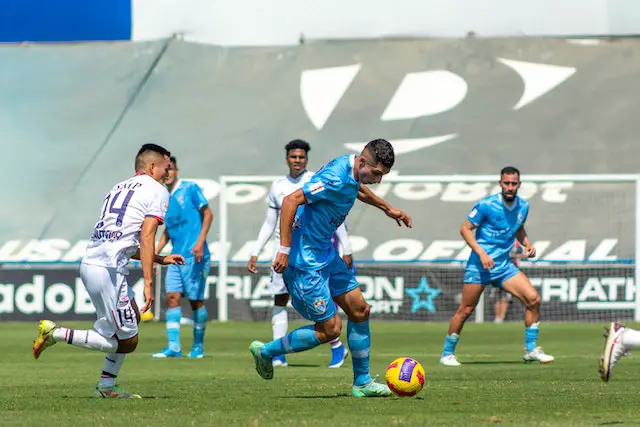
Participating in Inter-School Competitions
Inter-school soccer competitions provide students with opportunities to showcase their abilities and compete against other schools. By participating in these competitions, students develop valuable skills such as teamwork, goal-setting, and resilience. Furthermore, inter-school competitions foster a sense of healthy rivalry and community spirit among schools.
Collaborating with Local Soccer Clubs
Schools can establish fruitful partnerships with local soccer clubs to enhance their after-school programs and clubs. Collaborating with clubs provides access to specialized training facilities, experienced coaches, and competitive leagues. This collaboration enables students to tap into a wider network of soccer enthusiasts and potentially pursue soccer at a more advanced level outside of the school environment.
Specialized Soccer Academies
For students who demonstrate exceptional talent and ambition in soccer, specialized soccer academies offer an avenue for intensive training and development.
Establishing Partnerships with Academies
Schools can establish partnerships with specialized soccer academies to provide talented students with additional opportunities. These partnerships often involve joint training sessions, workshops, and camps conducted by academy instructors. Such collaborations enable students to benefit from the expertise and resources of specialized academies, further nurturing their soccer abilities.
Incorporating Advanced Training
Specialized soccer academies focus on providing advanced training for aspiring soccer players. Through their programs, academies create a high-performance environment that supports students in refining their skills, including technical abilities, tactical understanding, and physical conditioning. This advanced training helps students prepare for competitive soccer at higher levels.
Focus on Skill Enhancement and Tactics
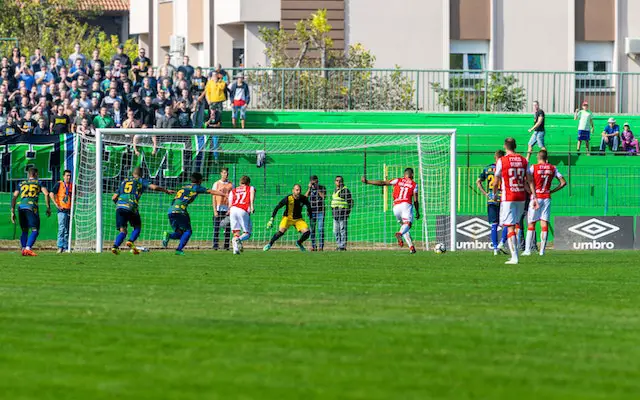
One of the key aspects of specialized soccer academies is a strong focus on skill enhancement and tactical knowledge. Students receive expert coaching in various aspects of the game, including advanced techniques, positional play, and game strategy. This comprehensive training enables students to deepen their understanding of the sport and refine their abilities with a higher level of precision and efficiency.
Providing Expert Coaching
Specialized soccer academies employ experienced and qualified coaches who have in-depth knowledge of the game. These coaches often have extensive playing or coaching backgrounds, allowing them to provide expert guidance and mentorship to aspiring soccer players. The presence of highly skilled coaches helps students develop their potential to the fullest and sets them on the path to success.
Opportunities for Aspiring Soccer Players
Soccer academies often serve as a stepping stone for aspiring soccer players to pursue higher levels of competition, such as college or professional soccer. Through partnerships with academies, schools can provide students with exposure to scouting networks, showcase opportunities, and scholarships. These opportunities open doors for aspiring soccer players to further their education and athletic careers.
Physical Education Curriculum Integration
Incorporating soccer into the broader physical education curriculum allows schools to provide students with a comprehensive sports education that goes beyond individual activities.
Developing Soccer-Focused Lesson Plans
To effectively integrate soccer into the physical education curriculum, schools develop soccer-focused lesson plans that align with educational objectives and standards. Lesson plans outline specific soccer skills, strategies, and knowledge to be covered across different grade levels. By explicitly incorporating soccer in lesson plans, schools ensure that students receive consistent and structured instruction in the sport.
Incorporating Soccer Skills into Broader Units
Schools can integrate soccer skills into broader units within the physical education curriculum. For example, during a unit on striking and fielding sports, students can practice soccer passing and receiving techniques. By integrating soccer skills into different units, students have the opportunity to transfer their soccer knowledge and skills to other sports and activities, promoting versatility and adaptability.
Covering Various Aspects of the Game
A comprehensive soccer curriculum covers various aspects of the game to provide students with a well-rounded understanding. This includes technical skills like dribbling, shooting, and ball control, as well as tactical concepts such as formations, game strategies, and team play. Covering a wide range of aspects ensures that students develop a holistic understanding of soccer and can apply their knowledge effectively.
Balancing Practical and Theoretical Learning
Effective soccer curriculum integration strikes a balance between practical and theoretical learning. While practical sessions allow students to actively engage in soccer-related activities and drills, theoretical components provide opportunities for discussion, analysis, and reflection. This combination of hands-on practice and classroom-based learning deepens students’ understanding of soccer and enhances their critical thinking skills.
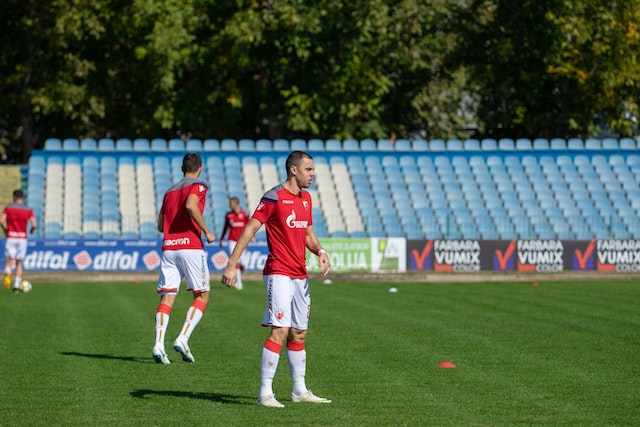
Assessment and Grading in Soccer Curriculum
To assess students’ progress and skills in soccer, schools incorporate assessment and grading strategies into the soccer curriculum. This includes observing students’ performance during practical sessions, evaluating their understanding of soccer concepts through written assignments, and conducting periodic assessments or quizzes. Grading in the soccer curriculum ensures accountability and encourages students to strive for improvement.
Interdisciplinary Approach
Soccer offers unique opportunities for interdisciplinary learning, allowing students to explore connections between soccer and other academic subjects.
Soccer in Mathematics Education
Mathematics and soccer are intrinsically linked, providing ample opportunities for mathematical learning. Students can analyze player statistics, calculate scores and goal differentials, and study probability and statistics related to the outcomes of soccer matches. By incorporating soccer in mathematics education, students gain a practical understanding of mathematical concepts through real-life applications.
Studying the Physics of Soccer
Physics plays a significant role in understanding the dynamics of soccer, including ball trajectory, motion, and forces involved in soccer actions. Students can study projectile motion, the principles of force and energy, and the effects of friction and air resistance on the movement of the soccer ball. By studying the physics of soccer, students deepen their understanding of fundamental scientific concepts.
Analyzing the Social Impact of Soccer
soccer has a profound social impact globally, fostering community cohesion, cultural exchange, and promoting social integration. Students can analyze the influence of soccer in different societies, study the history of soccer as a unifying force, and explore the role of soccer in promoting gender equality and social justice.
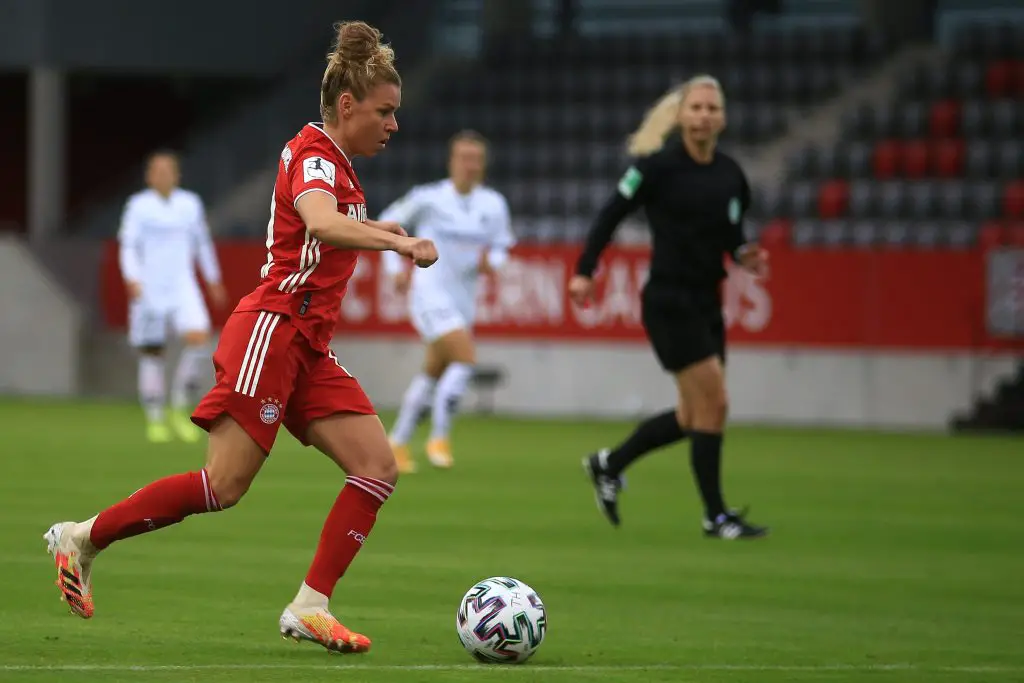
By analyzing the social impact of soccer, students gain a broader perspective on the sport beyond its physical aspects.
Exploring the Cultural Significance of the Sport
Soccer is deeply ingrained in the cultural fabric of many countries and communities. Schools can encourage students to explore the cultural significance of soccer by studying the traditions, rituals, and folklore associated with the sport. Through this exploration, students develop cultural awareness, foster respect for diversity, and gain insights into the role soccer plays in different societies.
Connecting Soccer with Language Arts
Language arts and soccer can be seamlessly integrated through various activities. Students can write match reports, create soccer-themed poetry or short stories, or analyze sports commentary. Connecting soccer with language arts provides opportunities for creative expression, improves language skills, and encourages critical thinking and analysis.
Community Partnerships
Collaborating with local teams, clubs, and organizations allows schools to expand their soccer programs and connect with the broader community.
Collaborating with Local Teams and Clubs
Schools can collaborate with local soccer teams and clubs to provide additional training opportunities and support for students. This collaboration may involve joint coaching sessions, friendly matches, or sharing of resources. By engaging with local teams and clubs, schools create a bridge between the school environment and the larger soccer community, fostering a sense of belonging and connection for students.
Organizing Soccer Camps and Clinics
Schools can organize soccer camps and clinics in collaboration with local teams or professional players. These events provide students with intensive training sessions, skill development workshops, and exposure to real-life soccer experiences. Soccer camps and clinics create a vibrant and dynamic learning environment that inspires students to reach their full potential in the sport.
Engaging Professional Soccer Players
Inviting professional soccer players to share their expertise and experiences with students can be highly motivating and inspiring. Schools can arrange guest speaker sessions or interactive workshops where professional players discuss their journeys, offer guidance, and lead training sessions. Interaction with professional players ignites students’ passion for soccer and exposes them to role models in the sport.
Involving Parents and Community Members
To strengthen the bond between the school, parents, and the community, schools can involve parents and community members in soccer-related events and activities. Parents can assist in coaching or organizing tournaments, while community members can contribute to the development of soccer facilities or sponsorships. Involving parents and community members creates a supportive network that enhances students’ soccer experiences.
Hosting Soccer Events and Fundraisers
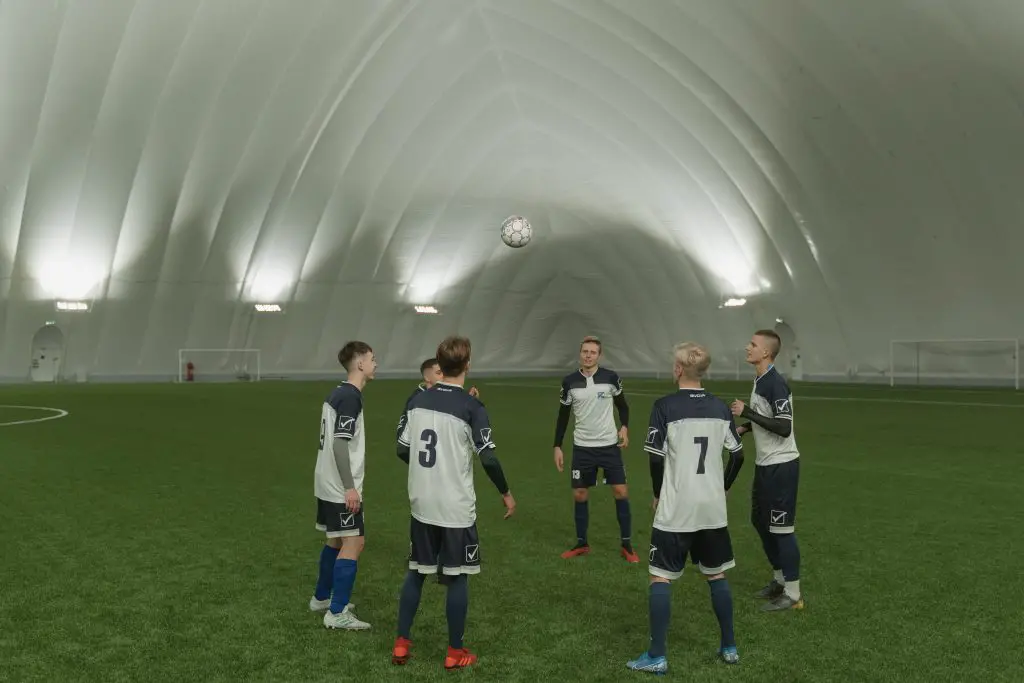
Schools can host soccer events and fundraisers to create a sense of excitement and raise funds for soccer-related initiatives. Events like mini-tournaments, charity matches, or soccer-themed fundraisers not only generate financial support but also provide students with opportunities to showcase their skills and foster school spirit. Hosting soccer events brings the school community together in celebration of the sport.
Soccer in Other Subjects
Soccer can be integrated into various academic subjects, encouraging cross-curricular connections and promoting multidimensional learning experiences.
Soccer-Themed Literature and Reading Activities
English language arts classes can incorporate soccer-themed literature, novels, or biographies related to soccer into their reading curriculum. By exploring soccer through literature, students develop reading comprehension skills while gaining insights into different cultural perspectives and experiences.
Soccer-Related Art Projects
Art classes can engage students in soccer-related art projects, such as creating artwork inspired by famous soccer players, designing team logos or jerseys, or capturing dynamic moments from soccer matches. These art projects allow students to express their creativity while deepening their appreciation for the sport.
History and Geography of the Sport
Soccer’s rich history and global presence make it an excellent subject for studying history and geography. Students can explore the origins and development of soccer, investigate significant tournaments and events, or analyze the geopolitical implications of international matches. Studying the history and geography of soccer broadens students’ knowledge and understanding of both the sport and the world.
Integrating Soccer into Physical Science
The principles of physics, biology, and chemistry can be applied to soccer within the context of physical science classes. Students can explore topics such as the biomechanics of soccer movements, the physiology of endurance and fitness, or the analysis of sports equipment. Integrating soccer into physical science promotes scientific inquiry and highlights the practical applications of scientific concepts.
Using Soccer for Character Education
Character education programs can leverage soccer to promote essential values and traits such as teamwork, respect, resilience, and fair play. By incorporating soccer activities, discussions, and reflections into character education curricula, schools help students understand and embody these values in the context of sportsmanship and life beyond the soccer field.
Technology and Soccer
Technology plays an increasingly significant role in soccer education, offering innovative tools and platforms that enhance learning experiences.
Utilizing Video Analysis Tools
Video analysis tools enable coaches and students to review and analyze soccer performances. Students can learn from their own gameplay or study professional matches to improve their tactical understanding. By utilizing video analysis tools, students gain valuable insights into their strengths and areas for improvement, further accelerating their progress.
Virtual Soccer Simulations and Gaming
Virtual soccer simulations and gaming platforms provide students with immersive experiences that replicate real-life soccer scenarios. These platforms allow students to apply their knowledge of the sport, make strategic decisions, and engage in realistic gameplay. Through virtual soccer simulations and gaming, students enhance their decision-making skills, tactical awareness, and adaptability.
Tracking Individual and Team Performance
Monitoring and tracking individual and team performance using technology can provide valuable data to students and coaches. Wearable devices, such as fitness trackers or GPS devices, allow students to analyze aspects like speed, distance covered, or heart rate during training or matches. This data-driven approach helps students set and monitor training goals, identify areas for improvement, and optimize their performance.
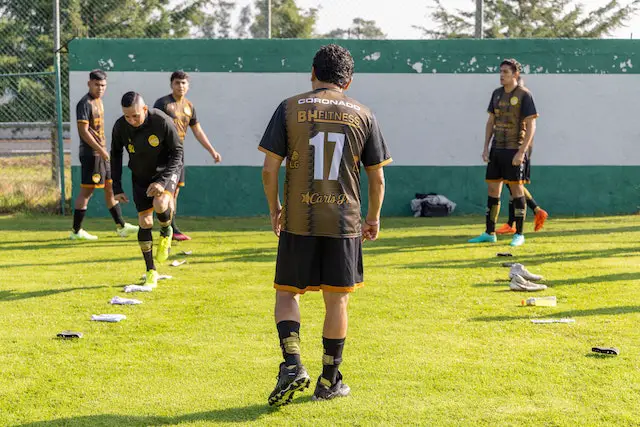
Incorporating Soccer into Virtual Learning Platforms
Virtual learning platforms can integrate soccer-related content, quizzes, and interactive modules into their curriculum. Online modules on soccer history, rules, or strategies provide students with self-paced learning opportunities. Incorporating soccer into virtual learning platforms ensures accessibility and encourages independent exploration of soccer knowledge and skills.
Online Resources and Tutorials for Soccer Education
The internet offers a vast array of online resources and tutorials for soccer education. Students can access instructional videos, tutorials, blogs, and online communities to deepen their understanding of the sport. Online resources provide students with flexibility in their learning journey and enable them to explore soccer outside of traditional classroom settings.
Soccer Inclusion and Adaptation
Soccer can be adapted to accommodate students with disabilities, ensuring inclusivity and equal participation for all students.
Adapting Soccer for Students with Disabilities
Through modifications and adaptations, schools can make soccer inclusive for students with disabilities. For example, using larger and softer balls, adjusting field sizes, or modifying rules and game formats can make soccer more accessible. Adapting soccer for students with disabilities ensures that everyone can actively participate and enjoy the benefits of the sport.
Creating Inclusive and Modified Versions of the Game
Inclusive and modified versions of soccer allow students with different abilities and skill levels to participate meaningfully. Schools can implement variations such as seated soccer, blindfolded soccer, or wheelchair soccer, tailoring the game to cater to diverse needs. Creating inclusive and modified versions of soccer fosters a sense of belonging and provides all students with opportunities to engage in physical activity.
Teaching Strategies for Diverse Skill Levels
In physical education classes, teachers employ various teaching strategies to accommodate diverse skill levels in soccer. Differentiated instruction allows educators to provide individualized support and challenges based on students’ abilities. By adapting drills, exercises, and game formats to suit different skill levels, teachers ensure that all students can participate and progress in their soccer skills.
Fostering a Supportive and Inclusive Environment
Schools prioritize fostering a supportive and inclusive environment in their soccer programs. This includes promoting positive attitudes towards differences, encouraging teamwork and cooperation, and addressing any potential prejudices or inequalities. Fostering a supportive and inclusive environment ensures that all students feel valued and respected, regardless of their background or abilities.
Strengthening Social Integration through Soccer
Soccer serves as a platform for social integration, allowing students from diverse backgrounds to come together and build relationships. By promoting interactions and fostering teamwork, schools empower students to learn from and appreciate each other’s differences. Soccer helps break down barriers and promotes social integration, contributing to a harmonious and inclusive school community.
Benefits of Soccer in Schools
Incorporating soccer into schools’ curricula provides a wide range of benefits for students, extending beyond physical fitness and sports skills.
Promoting Physical Fitness and Health
Regular participation in soccer activities helps students improve their overall physical fitness and health. The sport provides an excellent cardiovascular workout, enhances muscular strength and endurance, and improves coordination, agility, and flexibility. Through soccer, schools support students in developing healthy lifestyle habits and understanding the importance of regular physical activity.
Enhancing Cognitive Abilities and Academic Performance
Engaging in soccer activities has positive impacts on students’ cognitive abilities and academic performance. Playing soccer requires quick decision-making, spatial awareness, and problem-solving skills, all of which can transfer to academic tasks. Moreover, the physical activity and mental stimulation associated with soccer have been linked to improved focus, concentration, and memory, contributing to better academic outcomes.
Developing Critical Life Skills
Soccer education fosters the development of critical life skills that are transferable beyond the soccer field. Through teamwork and cooperation, students learn effective communication, interpersonal skills, leadership, and conflict resolution. The discipline, perseverance, and resilience cultivated in soccer prepare students for the challenges they may face in their personal and professional lives.
Fostering Social and Emotional Development
Participation in soccer activities supports students’ social and emotional development. Soccer promotes teamwork, empathy, and respect for others, helping students develop meaningful relationships and build a sense of belonging. Moreover, soccer provides opportunities for self-expression, self-confidence, and emotional resilience, enabling students to manage stress, setbacks, and success with poise and maturity.
Instilling a Lifelong Love for Sports
By engaging students in soccer from an early age, schools instill a lifelong love for sports and physical activity. The positive experiences, friendships, and personal growth fostered through soccer often lead students to continue participating in sports throughout their lives. Instilling a lifelong love for sports promotes a healthy and active lifestyle beyond the school years, contributing to long-term physical and mental well-being.
Conclusion
In conclusion, schools incorporate soccer into their curricula through various approaches, recognizing its multifaceted benefits for students. Physical education classes, after-school programs, specialized soccer academies, and interdisciplinary integration all provide avenues for students to engage with soccer.
By leveraging community partnerships, technology, and inclusion strategies, schools ensure that soccer education is inclusive, comprehensive, and enjoyable for all students. The incorporation of soccer in schools promotes physical fitness, cognitive development, critical life skills, social and emotional growth, and a lifelong appreciation for sports, contributing to the holistic education of students.


